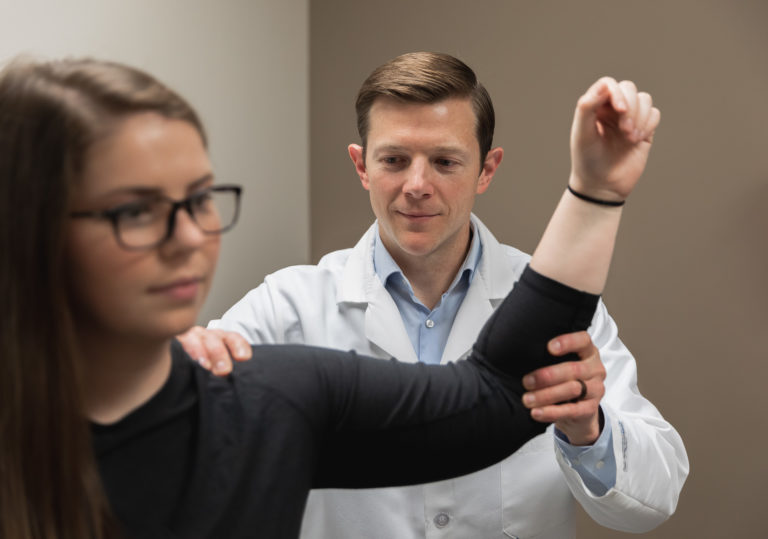Arthritis commonly occurs in the thumb. Many patients worry surgery is the only treatment option, but fortunately, there are three treatment options for thumb arthritis. As a hand surgeon, the first step I take is sending the patient to a hand therapist for a custom brace. I usually have the patient wear the brace for about four weeks. The good news: about 70 percent of people feel better from wearing the brace alone.
However, if the pain persists even with the brace, then I’ll frequently recommend a cortisone injection, which is effective for about 80 percent of people. The last option for thumb arthritis treatment is hand surgery, and that’s what we call a CMC arthroplasty. In the following video, I cover more about CMC arthroplasty, recovery following hand surgery for thumb arthritis, and more:
For more in-depth information, see my article called Thumb Arthritis in Kansas City Health & Wellness Magazine. Patients with other hand or wrist conditions may find the following information helpful:
- Carpal Tunnel Syndrome: Causes, Symptoms & Treatment
- Cubital Tunnel Syndrome: What are the symptoms and treatment?
- What are the treatment options for hand and wrist conditions at Dickson-Diveley Orthopaedics?
 About the Author: Brian Divelbiss, M.D. is a board-certified orthopedic surgeon specializing in conditions of the hands, wrists and upper extremities. He joined Dickson-Diveley Orthopaedics in 2001 and has served as President and CEO of the group since 2012.
About the Author: Brian Divelbiss, M.D. is a board-certified orthopedic surgeon specializing in conditions of the hands, wrists and upper extremities. He joined Dickson-Diveley Orthopaedics in 2001 and has served as President and CEO of the group since 2012.
***
The medical information contained in the Dickson-Diveley Orthopaedics website is provided to increase your knowledge and understanding of orthopedic conditions. This information should not be interpreted as a recommendation for a specific medical or surgical treatment plan. As each patient may have specific symptoms or associated problems, the treatment regimen for a specific patient may not be the proper treatment for another.
Gaining knowledge and understanding of a particular problem or condition is the first step in any medical treatment plan. I believe the information presented on our website will be helpful for those individuals experiencing hand and wrist diseases, injuries, or other related problems. However, this information is not intended to replace the advice of your family physician. You are encouraged to consult with your physician to discuss any course of treatment presented or suggested.


